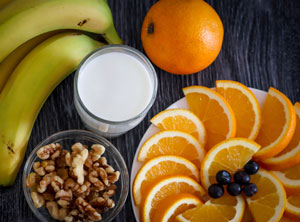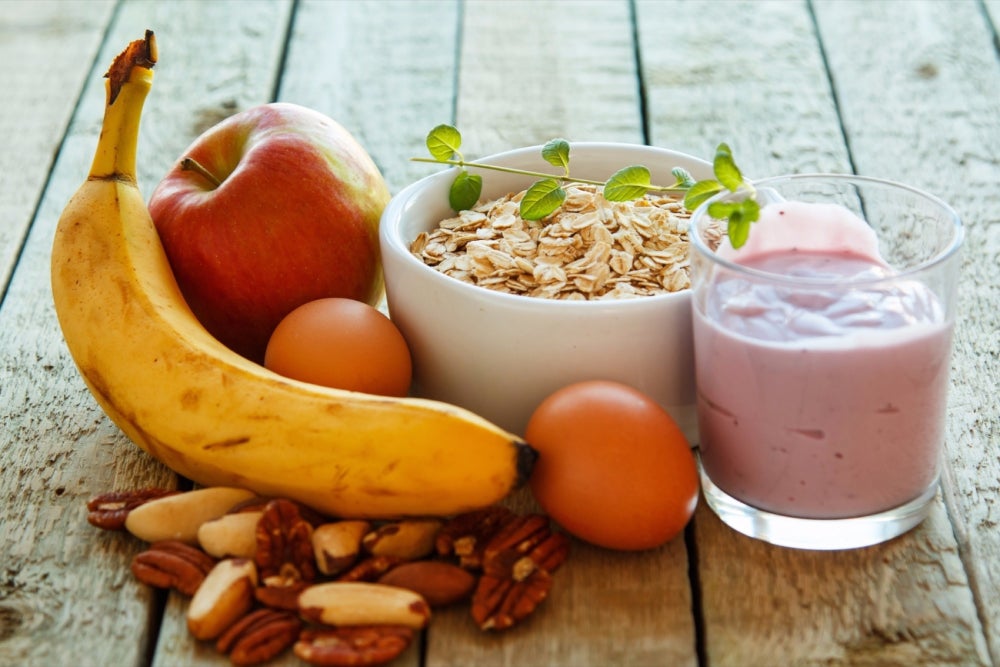After School Snacks Shouldn't Mean Filling Up with Empty Calories
TEXARKANA, Ark. –
Children need snacks just like they need water; however, those snacks should be healthy and not just full of empty calories.
When children are active, they require more calories. In some cases, they may need more calories than an adult if their activity level is moderate to high. Although the child may be sitting in class all day, there is also PE class, recess and after-school activities that increase their energy level.
This proves that snacking is essential for our children. But not all snacks are created equal. Snacks can provide a large amount of a child’s food intake for the day so those snacks should also provide nutrition, not just empty calories.
Snacks Should Compliment a Healthy Diet
Snacks are essentially mini-meals and should complement MyPlate. This can be as easy as a glass of low-fat milk and an oatmeal raising cookie, or a yogurt fruit pop. Milk has nutrients that a growing body needs to help build bones and teeth, to help blood clot, to help regulate muscle function, and to build and repair tissue.
I know that eliminating all of a child’s favorite high-fat, high-calories, empty calorie snack foods will not be a popular decision. In some cases, your child may need those calories if they are extremely active. Including these foods occasionally may teach the child about moderation, something they will need to practice for later in life.
Many of those “empty calorie” snack foods that your children love can be replaced with healthier versions, those made with less fat, sugar or sodium. Help your children read nutrition fact labels and evaluate the nutrition of the snack they have chosen.
Avoid Sugary Drinks!
After school drinks can add empty calories to a child’s diet. Sugar drinks like soft drinks, Kool-Aid, or fruit drinks are poor choices for snack time. Fruit juices made from 100 percent fruit (read the label) are much better choices.
Plan Snack Time
Snacks need to be planned for. If all there is at home is chips, soft drinks, cookies, and candy, then chances are that your child will not make the right snack choice.
 Some snack items to have onhand might include:
Some snack items to have onhand might include:
- light popcorn
- cheese and whole wheat crackers
- popsicles made from 100 percent juice
- pretzels or baked chips
- yogurt, or pudding
- hard cooked eggs
- fresh and dried fruits
- raw vegetables and low-fat dips
- popcorn
- graham crackers
- animal crackers
- vanilla wafers
It's important for your child to have choices when it comes to snacking. If all the choices are reasonably healthy ones, then both you and your child can be happy.
At our home, we have a snack drawer which contains things such as:
- applesauce cups
- mandarin oranges
- raisins
- individual serves of peaches or mixed fruit
- baked chips
- peanut butter
- vegetable soups
- bagels
- snack size pudding
In my refrigerator/freezer, you will find:
- yogurt
- cheese sticks and cubes
- low-fat milk (the kids drink it at school so why not at home)
- fruit juice pops
- frozen banana pops.
I also keep fresh fruit ready to eat, such as strawberries, watermelon balls, berries and kiwi, peaches and plums, washed and ready to eat.
All of this is easy to do if you will plan ahead.
Give Your Child Realistic Choices
Ask your children what they would like for snacks as you make your list. But be realistic and offer similar choices. For instance, don’t offer the choice between ice cream and pretzels, because they will probably pick something you really don’t want them to have. Instead, make the choice similar, such as yogurt or sherbet, peach slices or apple wedges, pudding or cheese cubes.
Pay Attention to Portions
It's also important to limit portion sizes. Don’t allow them to have the whole box of vanilla wafers, just a few. Snacks should provide just enough to get them to the next meal, not replace it.
Set a Good Example
Most of all, as parents, we must set a good example. If your children see you snacking on fresh fruits and vegetables, they are likely to do the same. But, if your snacks always consist of sugary snack cakes and soft drinks, expect your children to ask for the same. Make healthy snacks a family affair.
What about appliances?
Don’t forget to discuss the use of appliances with your children. If they are allowed to use the microwave, what do they need to do to remain safe and what type of foods can they prepare? Microwave popcorn (hold the butter please) is a favorite but remind the children to open the bag away from their body and face because of the steam that will escape. Other choices might be baked potatoes, low-fat hot dogs, or leftovers.
Our kids deserve a little refreshment after a hard day at school. Just make sure it’s good for them.
By Carla Due
County Extension Agent - FCS
U of A Division of Agriculture
Cooperative Extension Service
400 Laurel Street, Suite 215 Texarkana AR 71854
(870) 779-3609
cdue@uada.edu
